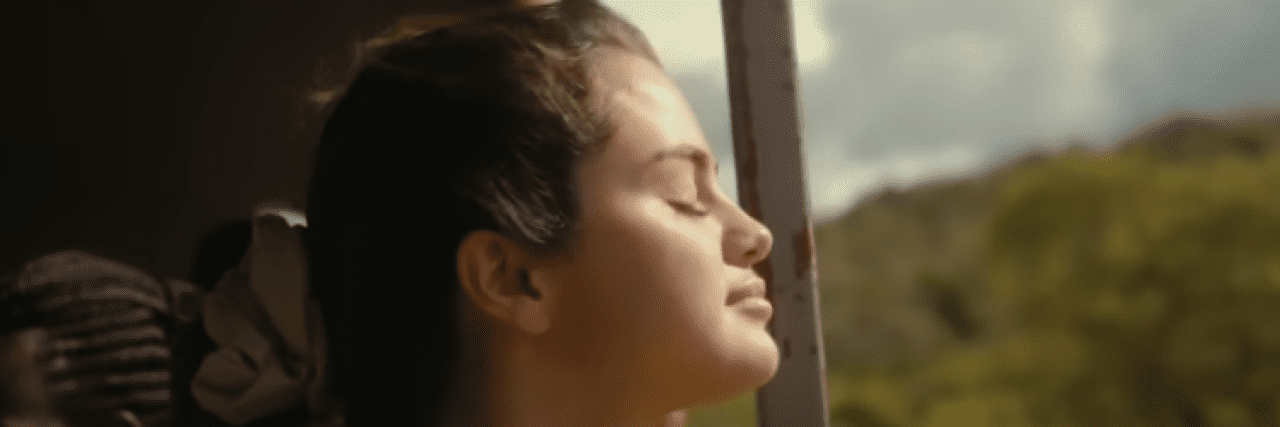Yeah, I’m constantly
Tryna fight something that my eyes can’t see
My mind and me
We don’t get along sometimes
And it gets hard to breathe
But I wouldn’t change my life
And all of the crashing and burning and breaking, I know now
If somebody sees me like this, then they won’t feel alone now
– My Mind and Me by Selena Gomez
• What is Bipolar disorder?
Shifting the Conversation
With the release of her new single and documentary, both titled “My Mind and Me,” Selena Gomez brings to light the parts of mental health conversations that are typically left in the shadows. Countless articles have been published on concepts like self-care chock-full of advice like “take more bubble baths” or “go for a daily run.” What happens when we venture beyond the spectrum of anxiety or mild depression? What about severe mental illness, cases in which just lifestyle changes or bubble baths are insufficient?
While numerous celebrities have opened up about certain conditions (e.g., eating disorders, depression, anxiety), other conditions and symptoms are frequently left out of the conversation (e.g., bipolar disorder, psychosis). Suicidality is also mentioned on occasion, but often too late, such as in the news of a celebrity’s passing. What excited me about this documentary was that it tackles mental illness in a raw, realistic way.
Not only does it have a realistic approach, but it also addresses bipolar disorder, psychosis, and suicidality. Given that misconceptions and stigma continue to persist around these topics, having someone with Selena’s platform address them has the potential to create a seismic shift in mental health conversations, ones that tend to stick to surface-level, comfortable, fluffy topics.
Recovery Is Not Linear
Spoiler alert: The end of the documentary doesn’t get wrapped up in a neat little “Happy Ever After” ending. While this may sound like it would be sad for those who relate to her or have bipolar disorder (previously known as manic-depressive illness), I actually appreciate this approach. Too often, mental health journeys are portrayed in a pollyanna-ish manner. The typical approach is artificially optimistic.
The individual’s journey is portrayed in oversimplified terms as if recovery is linear, such as the following:
A) Get symptoms.
B) Go to a mental health professional.
C) Get an accurate diagnosis on the first try.
D) Try out a treatment. Yay, the first one you tried works great! No need to mess around with type, combination, or dosage. No side effects!
E) Get better ASAP. Go back to “normal” and being a “high-functioning” individual, as if mental health concerns are just a part of the past.
F) Live happily ever after.
The popular narrative overlooks the complexity of treatment on so many levels. It also actually has the potential to add to the hopelessness of viewers who feel a major disconnect between that simple, happy narrative and their own experiences. There are a myriad of barriers that prevent recovery from being “linear” in real-life scenarios.
This could be due to:
- Cultural beliefs (including shame around seeking mental health treatment)
- Stigma (self-stigma, public stigma)
- Financial barriers (insurance, cost)
- Lack of access (e.g., lack of availability of local providers)
- Fear of professional consequences (licensing board discrimination; hiring practice discrimination)
- Ableism
- Symptom severity
- Recurrence of episodes
- Treatment-resistant conditions
- Misdiagnosis
- Medications that stop working for whatever reason
- Issues with finding the right medication/therapy/combination/dosage
- Severe side effects
- Comorbidity
Need I go on? Her documentary shows that even Selena Gomez, a celebrity with infinite resources at her disposal, struggled with her recovery. I appreciate the strength it took to be this vulnerable with her audience.
Finding Purpose
“There’s something very powerful in what she’s doing, not just for other people, but for Selena herself… When you struggle with mental-health concerns, it can erode your sense of self, your own self-esteem, and then it makes it harder and harder to reach out to other people, and so you enter this downward spiral of loneliness and isolation. Service has the power to break that cycle.”
— Surgeon General Vivek Murthy, Rolling Stone
As someone with bipolar disorder (Type 1), I appreciate the vulnerability and openness used in her documentary. Selena is continuing to find her purpose and pursue it: service. As someone who has spent many hours focused on educating others about mental health, particularly bipolar disorder and lived experience, I love the direction she has taken with her journey. She used this experience as an opportunity to enlighten and support others, lifting the voices of others and looking for ways to help the general public become more informed about mental health wellness.
I wish her the best with the road ahead and cannot wait to see how she continues to use her platform to impact the mental health field.
Image via Apple TV+ YouTube

